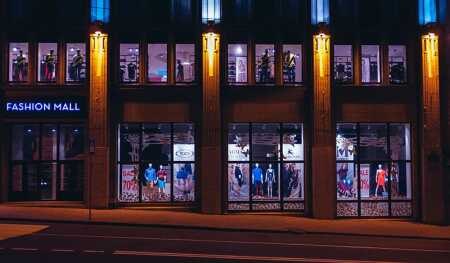This article is republished with permission from REITCafe.
This week, Macy’s and Best Buy announced plans to open 300-square-foot (28 sq m) consumer electronics departments in ten Macy’s stores in early November. The announcement seems innocuous, since the store-within-a-store concept is not new, but it is important to these retailers, both of which have struggled as consumers increasingly shop online and at discount retailers. It will also be studied by others looking to boost sales and enhance their product offerings.
The evolution of omnichannel retailing has made this move possible. Retailers seek to attract traffic to their bricks-and-mortar stores, while at the same time supplementing these stores with an online presence. Many retailers now limit what they carry in the store. An apparel retailer may not have as many sizes or colors of a particular style as it would have in the past, relying instead on customers’ ability to place online orders in the store for delivery to their home. When a greater depth of products is offered online, space becomes available for a wider array of merchandise in bricks-and-mortar stores. The store-within-a-store is one way to achieve a greater breadth of product offerings.
| TREPP-i Survey Loan Spreads (50–59% LTV)* |
| This Week | Previous Week | Previous Month | End 2014 | End 2013 | |
| Industrial | 168 | 166 | 149 | 138.5 | 170 |
| Multifamily | 161 | 161 | 146 | 139.8 | 166.7 |
| Office | 175 | 174 | 158 | 148 | 175 |
| Retail | 166 | 166 | 150 | 139.8 | 175 |
| Average Spread | 167.5 | 166.8 | 150.6 | 141.5 | 171.7 |
| 10-year Treasury Yield** | 2.18 | 2.12 | 2.22 | 2.17 | 3.04 |
For Best Buy, which has had some success in turning itself around, the move marks its latest merchandising initiative. The company has downsized stores and invested heavily in its online presence. Best Buy has teamed up with Apple, Pacific Kitchen and Home stores, and Magnolia Design Center to open stores within its stores. Despite strong competition from Amazon, Walmart, and Target, Best Buy has reported growth in same-store sales for four consecutive quarters, most recently gaining 3.8 percent in its fiscal quarter ending August 1, 2015. Its stock price is up 11.0 percent from year-ago levels.
Macy’s, however, is not as far along in its turnaround efforts. It has struggled as consumers buy more at discounters and as they concentrate spending on restaurants, entertainment, and electronics instead of on Macy’s core apparel and home goods. In January, the retailer announced a series of initiatives to promote growth, but its current stock price is down slightly from year-ago levels. Same-store sales fell 2.1 percent during the second quarter. Macy’s opened its first off-price retail stores, called Macy’s Backstage, this month in Brooklyn and Queens and on Long Island, with three more slated to open before the year’s end. It also announced the closure of 35 to 40 underperforming stores (of its 770 total Macy’s stores) in early 2016. On the urging of activist shareholders, it is also considering spinning off its valuable real estate assets into a real estate investment trust (REIT).
It is difficult to quantify REITs’ exposure to department stores like Macy’s because department stores frequently own their real estate, while the REIT owns the rest of the mall. Yet, department stores are important to attract shoppers to the mall. Simon Property Group leases 123 stores totaling about 23,400 square feet (2,174 sq m) in its U.S. malls to Macy’s, which is its top anchor tenant. Macy’s represents 12.8 percent of total square feet in SPG’s U.S. properties, yet because anchor department store rents are generally very low, it represents only 0.4 percent of base minimum rent for SPG. Other mall REITs’ exposure to Macy’s is less clear.
Macy’s and Best Buy are emblematic of a retail trend to maximize bricks-and-mortar space. Whether this new partnership will succeed and expand to other locations is unknown, as is its impact on REITs that lease space to these two important tenants. Undoubtedly, more store-within-a-store concepts will emerge as omnichanneling retailers expand the breadth of their in-store offerings.
* TREPP-i Survey Loan Spreads levels are based on a survey of balance sheet lenders. For more information, visit Trepp.com.
** - 10 yr. Treasury Yield as of 09/11/2015.





